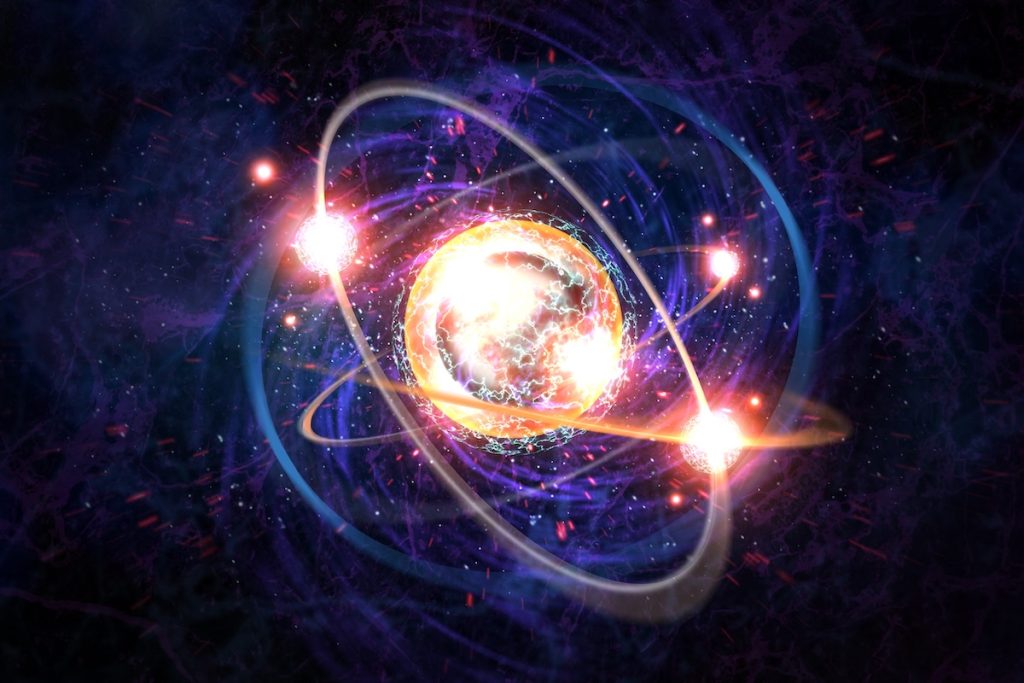
(Source: Ezume Images/Shutterstock)
If the universe is a vast LEGO set, then the Higgs boson particle decides just how heavy each brick should be. Physicists have already confirmed that it couples correctly to the heaviest blocks, but proving it also gives lighter bricks their weight has been nearly impossible.
Charm quarks are mid-weight members of the quark family that occupy the middle ground between the common up/down quarks found in everyday matter and the rare bottom/top quarks produced only in high-energy collisions. They are tricky to study because they live only trillionths of a second before breaking into particle “jets” that look very similar to other types of particles.
Now, with newly trained AI models on the case, researchers at CERN’s CMS experiment are finally closing in on the elusive Higgs-to-charm decay signal.
Why the Charm Quark Still Puzzles Particle Physicists
 Since its discovery at the Large Hadron Collider in 2012, the Higgs boson has anchored the Standard Model of particle physics by explaining how fundamental particles gain mass. Precise measurements have verified the Higgs’ interaction with top and bottom quarks, yet its coupling to lighter charm quarks remains unobserved. If the Higgs grants charm quarks a mass that deviates from theoretical predictions, it would hint at physics beyond the Standard Model.
Since its discovery at the Large Hadron Collider in 2012, the Higgs boson has anchored the Standard Model of particle physics by explaining how fundamental particles gain mass. Precise measurements have verified the Higgs’ interaction with top and bottom quarks, yet its coupling to lighter charm quarks remains unobserved. If the Higgs grants charm quarks a mass that deviates from theoretical predictions, it would hint at physics beyond the Standard Model.
The search is a major challenge. Only about one in 70 billion proton–proton collisions produces a Higgs boson alongside two top quarks that then decay into a pair of charm quarks. Those charm quarks survive for mere trillionths of a second before erupting into jets of other particles that look almost identical to jets from ordinary up and down quarks. Traditional tagging tools struggle to separate those similar particles, leaving researchers with a task akin to hunting for a single glitter grain in a vast desert of data.
An AI Toolkit of Graph Neural Nets and Transformers
CERN says the new AI-powered search method allows researchers to measure the Higgs–charm interaction more precisely than ever before.
Using machine learning models, the researchers have addressed the two biggest problems. The first is the identification of charm jets, which is performed by employing a graph neural network. The second challenge is distinguishing Higgs boson signals from background processes, which the researchers have addressed with a transformer network. Transformer networks are the same model architecture behind large language models, but this model was trained to classify events instead of generating text. The charm-tagging algorithm was trained on hundreds of millions of simulated jets to allow it to recognize charm jets with higher accuracy, CERN says.

The Large Hadron Collider at CERN (Source: D-VISIONS/Shutterstock)
With data collected from 2016 to 2018, combined with the results from previous searches for the decay of the Higgs boson into charm quarks via other processes, the CMS team set the most stringent limits yet on the interaction between the Higgs boson and the charm quark, reporting an improvement of around 35% compared to previous constraints. CERN says this places significant bounds on potential deviations from the Standard Model prediction.
“Our findings mark a major step,” says Jan van der Linden, a postdoctoral researcher at Ghent University, in a CERN release. “With more data from upcoming LHC runs and improved analysis techniques, we may gain direct insight into the Higgs boson’s interaction with charm quarks at the LHC—a task that was thought impossible a few years ago.”
What More Data and Smarter Algorithms Could Reveal Next
CERN says that as the LHC collects more data, refinements in charm tagging and Higgs boson event classification could eventually allow CMS (and its companion experiment ATLAS) to confirm the Higgs boson’s decay into charm quarks.
Such a result would significantly advance the understanding of the Higgs mechanism across the full quark family while providing a rigorous benchmark for the Standard Model, which has guided particle physics for the past five decades. Should the AI sift out the charm quark’s whisper, it will finish the cosmic LEGO set and prove the Higgs boson hands every brick its weight.


1 Comment
Can you be more specific about the content of your article? After reading it, I still have some doubts. Hope you can help me. https://www.binance.com/de-CH/register?ref=UM6SMJM3